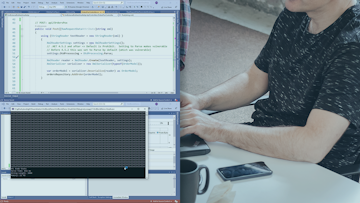
When we think of attacks on websites and applications, we often think about things like SQL Injection, Cross site request forgery, or attacks on our authentication layer. However, there are other avenues of attack into our applications and these can occur any time our application has to read in XML or JSON or binary data and deserialize that data. This course, Protecting Against XML External Entity and Deserialization Attacks in ASP.NET and ASP.NET Core, talks about three such attacks: the XML External Entities (XXE) attack, the XML bomb or Billion laughs attack and the Insecure deserialization family of attacks. Two of these...
Read more
Good to know
Save this course
Activities
Career center
Chief Information Security Officer (CISO)
Information Technology Auditor
Security Analyst
Ethical Hacker
Penetration Tester
Incident Responder
Security Researcher
Security Consultant
Network Security Engineer
Cybersecurity Engineer
Security Architect
Software Engineer
Information Security Analyst
Web Developer
Computer Security Analyst
Reading list
Share
Similar courses
OpenCourser helps millions of learners each year. People visit us to learn workspace skills, ace their exams, and nurture their curiosity.
Our extensive catalog contains over 50,000 courses and twice as many books. Browse by search, by topic, or even by career interests. We'll match you to the right resources quickly.
Find this site helpful? Tell a friend about us.
We're supported by our community of learners. When you purchase or subscribe to courses and programs or purchase books, we may earn a commission from our partners.
Your purchases help us maintain our catalog and keep our servers humming without ads.
Thank you for supporting OpenCourser.


